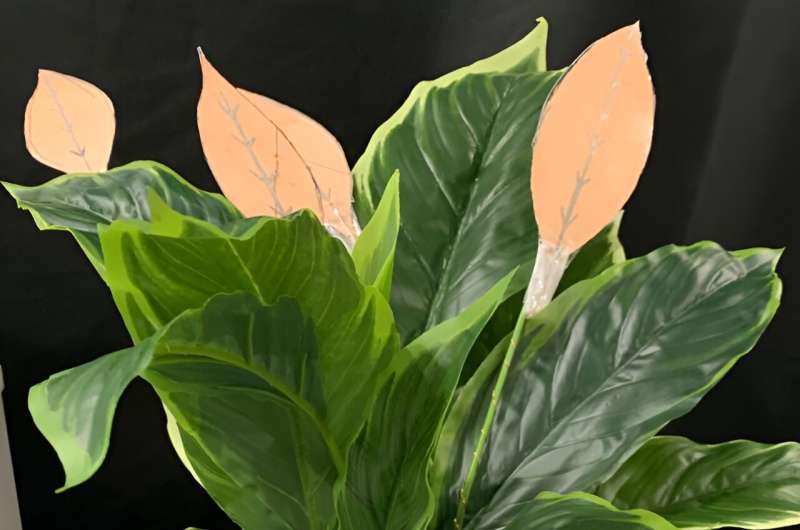
Faux vegetation are transferring into the twenty first century. Researchers developed literal “energy vegetation”—tiny, leaf-shaped mills that create electrical energy from a blowing breeze or falling raindrops—and described them in ACS Sustainable Chemistry & Engineering. The group examined the power harvesters by incorporating them into synthetic vegetation.
Electrical power could be produced by nature in a number of methods. For instance, photo voltaic panels convert mild power from the solar, and wind generators remodel the kinetic power of transferring air. Nevertheless, these strategies sometimes depend on a single supply and, subsequently, are solely efficient when that supply is offered. Photo voltaic panels do not work after sundown, for instance, and a relaxed day will not generate a lot wind energy.
Extra not too long ago, multi-source power harvesters have emerged as a way to seize power from completely different renewable sources in a single system, maximizing potential output. So, Ravinder Dahiya and colleagues needed to create a multi-source power harvester that might generate energy from each wind and rain.
The group constructed two several types of power collectors: a triboelectric nanogenerator (TENG) to seize kinetic power from the wind and a droplet-based power generator (DEG) to gather power from falling raindrops. The TENG consisted of a layer of nylon nanofibers sandwiched between layers of polytetrafluoroethylene, extra generally referred to as Teflon, and copper electrodes.
Static prices have been generated and transformed into electrical energy when the layers pressed into one another. Teflon was additionally used to make the DEG, which was waterproofed and coated with a conductive cloth to behave because the electrodes. As raindrops hit one of many electrodes, it induced an imbalance in prices, producing a present. Beneath optimum situations, the TENG produced 252 V of energy and the DEG 113 V, however just for quick intervals of time.
The group mounted the DEG atop the TENG and integrated leaf-shaped variations into a man-made plant. When the leaf-shaped mills have been uncovered to situations mimicking pure wind and rain, they powered 10 LED lights in brief sparkles. This proof-of-concept “energy plant” system may very well be additional developed into bigger techniques or networks of energy vegetation to provide clear power from pure sources, the researchers say.
Extra info:
Guanbo Min et al, Multisource Vitality Harvester on Textile and Vegetation for Clear Vitality Era from Wind and Rainwater Droplets, ACS Sustainable Chemistry & Engineering (2024). DOI: 10.1021/acssuschemeng.3c03620
American Chemical Society
Quotation:
Synthetic ‘energy vegetation’ harness power from wind and rain (2024, January 17)
retrieved 17 January 2024
from https://techxplore.com/information/2024-01-artificial-power-harness-energy.html
This doc is topic to copyright. Aside from any truthful dealing for the aim of personal research or analysis, no
half could also be reproduced with out the written permission. The content material is offered for info functions solely.
